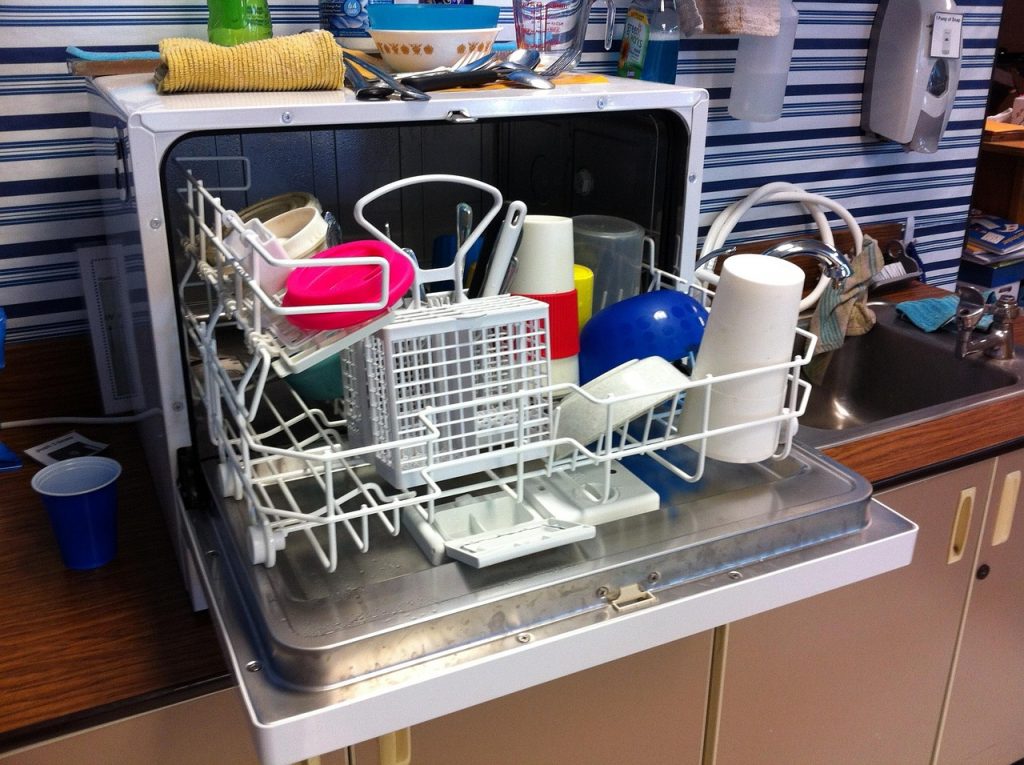If you’ve just opened your dishwasher to find it full of water, you’re not alone. A dishwasher that won’t drain is one of the most frequent appliance issues in UK homes. Fortunately, in many cases, it’s something you can resolve yourself, no engineer required.
This guide, written by Michael O’Neill of Pipeline Drainage Solution, walks you through practical steps to diagnose the problem and sort it yourself, potentially saving time and money on unnecessary repairs or replacements.
Important: Before doing anything, unplug your dishwasher or turn it off at the mains for safety.
Step 1: Deal With the Water Left Inside
Before you can start investigating what’s wrong, you’ll need to get rid of the water sitting in the bottom of the machine. If there’s only a small amount, it could be normal. But if there’s a large pool of water after a wash cycle, you’ve got a drainage issue on your hands.
Try this first: Mix a cup of white vinegar with a cup of bicarbonate of soda (baking soda) and pour it into the water. Let it sit for about 15–20 minutes. This can help to loosen any grime or small clogs inside the drain area. After that, run a rinse-only cycle and check if the water starts to move.
If the water remains, use a jug or cup to scoop it out, then mop up the rest with old towels.
Step 2: Clean the Filter Assembly
Dishwasher filters are designed to catch food waste and grease, but over time they can become blocked. This is the most common reason dishwashers fail to drain properly.
Look at the bottom of your dishwasher. Most models have a cylindrical filter and a mesh plate beneath the lower spray arm. Twist and lift these out. Wash them thoroughly under the tap, using washing-up liquid and an old brush if needed. It’s surprising how often this quick fix sorts the problem.
While the filter is removed, take a look in the sump (the small hole the water drains through) to see if anything obvious is blocking it, like food bits, broken glass, or fat buildup.
Step 3: Examine the Waste Hose
If the filter was clean or the issue persists after cleaning, the next thing to check is the waste pipe. This hose sends water from the dishwasher to your sink waste connection.
First, look behind the appliance to see if the hose is twisted, bent, or crushed. A kinked pipe can stop water from getting out. If you can remove the hose safely, check inside it for blockages by running water through it or blowing air through one end. If it’s clogged, try flushing it with water from your tap or a garden hose.
Make sure the hose sits in a high loop behind the dishwasher before going into the sink waste—this prevents water from flowing back into the machine.
Step 4: Make Sure the Sink Drain Isn’t the Problem
In many homes, the dishwasher drains into the same pipework as the kitchen sink. So if your sink is blocked or slow to drain, that can back water up into your dishwasher.
Run the taps and watch how quickly the sink empties. If it’s slow or makes gurgling sounds, there may be a blockage further down the pipe. Try a sink plunger or a safe drain-cleaning solution. In some cases, you might need to unscrew and clean the U-bend under the sink. If in doubt, this is a good time to get advice from a plumber.
Step 5: Check the Drain Pump (Advanced)
If none of the steps above have worked, the fault may lie with the internal drain pump. This part forces water out during the drain phase of the wash cycle.
Sometimes, debris like broken glass or food can jam the pump impeller. Accessing the pump often requires removing the dishwasher’s base or side panel, which may not be suitable for every homeowner. If you’re confident, unplug the machine and follow your user manual for access instructions. Otherwise, it’s sensible to call an appliance engineer at this point.
Simple Tips to Avoid Drainage Problems in Future
- Scrape food off plates before loading the dishwasher.
- Rinse the filter once a week to keep it clean and free-flowing.
- Run a monthly maintenance cycle using a dishwasher cleaner or a vinegar rinse.
- Don’t overload the machine, blocked spray arms can affect drainage performance.
Still Not Draining? When to Get Help
If you’ve followed all the steps above and your dishwasher still won’t empty properly, the issue could be electrical or involve a faulty sensor or pump motor. These faults are best left to a qualified repair technician, especially if your dishwasher is still under warranty.
Having a dishwasher that won’t drain is frustrating, but it doesn’t always mean a major repair or new appliance. In many cases, a quick clean of the filter or hose is all it takes to get things working again.
Try these steps in order and don’t skip the basics. Most drainage issues have a simple cause and a straightforward solution.

